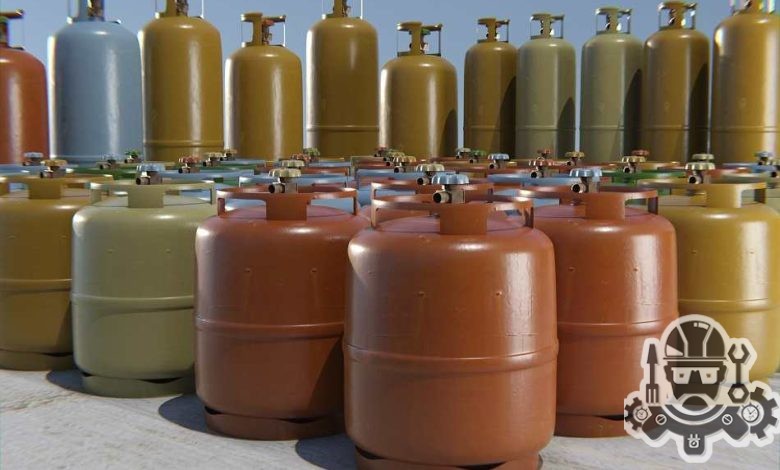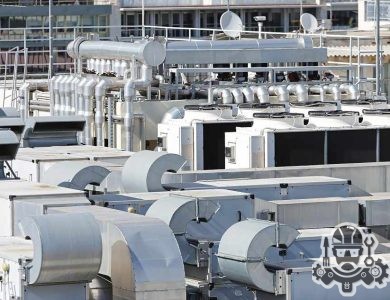A Guide to Choosing the Right Refrigerant for Your Cooling System

Introduction to Refrigerants
Refrigerants are compounds used in cooling systems to transfer heat and facilitate energy conversion. They play a vital role in maintaining stable temperatures in air conditioning and refrigeration systems. With the rising concern for environmental health, the need to phase out refrigerants that contribute to ozone depletion and global warming has become an urgent priority. Therefore, it is necessary to understand the different types of refrigerants.
Refrigerants are classified based on their chemical composition. Chlorofluorocarbon (CFC) refrigerants were commonly used in the past but have since been banned due to their harmful effects on the ozone layer. Hydrochlorofluorocarbon (HCFC) refrigerants were created as a replacement for CFCs but were later found to have adverse environmental effects. Hydrofluorocarbon (HFC) refrigerants are currently the most commonly used refrigerants in air conditioning and refrigeration systems. Natural refrigerants, such as hydrocarbons, ammonia, and carbon dioxide, are also an option.
| Refrigerant Type | Chemical Composition | Environmental Impact |
|---|---|---|
| CFC | Chlorine, Fluorine, Carbon | Ozone depletion, global warming potential (GWP) |
| HCFC | Hydrogen, Chlorine, Fluorine, Carbon | Ozone depletion, low GWP |
| HFC | Hydrogen, Fluorine, Carbon | Low ozone depletion, high GWP |
| Natural | Hydrocarbons, Ammonia, Carbon Dioxide | Low ozone depletion, low GWP |
When selecting a refrigerant, it is important to consider properties such as boiling point, pressure, and safety concerns. Refrigerant properties can affect the performance and efficiency of cooling systems. Therefore, careful selection of refrigerants is crucial in achieving optimal cooling system operation and maximizing energy efficiency.
Contents
Classification Of Refrigerants

Refrigerants are essential components in refrigeration and air conditioning systems as they absorb and release heat, allowing these systems to operate efficiently. Refrigerants come in different types and each has its own unique properties which make them suitable for certain applications. In this blog post, we will look at the Classification of Refrigerants based on their chemical composition and properties.
The Classification of Refrigerants is divided into four main categories: Chlorofluorocarbon (CFC), Hydrochlorofluorocarbon (HCFC), Hydrofluorocarbon (HFC), and Natural Refrigerants.
| Category | Composition | Uses |
|---|---|---|
| CFC | Chlorine, Fluorine, Carbon | Used in old refrigeration systems such as in cars and in air conditioners |
| HCFC | Hydrogen, Chlorine, Fluorine, Carbon | Used in refrigeration, air conditioning, and foam blowing applications |
| HFC | Hydrogen, Fluorine, Carbon | Used in refrigeration and air conditioning applications as a replacement for CFC and HCFC refrigerants |
| Natural Refrigerants | Ammonia, Carbon dioxide, Hydrocarbons, Water | Used in industrial and commercial refrigeration systems |
CFC refrigerants were first developed in the 1930s but it was later discovered that they were harmful to the environment as they deplete the ozone layer. HCFC refrigerants were then developed as a replacement for CFC refrigerants, but they were also found to have ozone-depleting potential. This led to the development of HFC refrigerants which do not contain chlorine and therefore do not contribute to ozone depletion.
One of the concerns with HFC refrigerants is their contribution to global warming as they have high global warming potential. This has led to a renewed interest in the use of natural refrigerants which have very low global warming potential and do not contribute to ozone depletion.
In conclusion, the Classification of Refrigerants helps us understand the different types of refrigerants and their properties. It is important to note that the use of certain refrigerants is regulated due to their impact on the environment. As a consumer, it is important to choose products that use environmentally-friendly refrigerants.
Chlorofluorocarbon (CFC) Refrigerants
Chlorofluorocarbon (CFC) refrigerants were commonly used in air conditioning and refrigeration systems for several decades before their harmful effects on the ozone layer were discovered. CFCs consist of carbon, chlorine, and fluorine atoms, which make them highly stable and non-flammable chemicals. They have properties such as low boiling point, low toxicity, and non-corrosiveness, which made them suitable for various applications in the HVAC-R industry.
However, the release of CFCs into the atmosphere was found to cause ozone depletion, which can lead to increased levels of ultraviolet radiation reaching the earth’s surface, resulting in environmental and health problems. The Montreal Protocol, an international treaty signed in 1987, aimed to phase out the production and use of CFCs and other ozone-depleting substances.
| Effect of CFCs on the Ozone Layer |
|---|
| 1. Ozone Depletion: CFCs break down in the stratosphere and release chlorine atoms, which react with ozone molecules. This reaction leads to the depletion of the ozone layer, which can cause skin cancer, cataracts, and other health problems in humans and animals. |
| 2. Global Warming Potential: While CFCs do not contribute directly to global warming, they have a high global warming potential due to their ability to trap heat in the atmosphere. |
As a result of the Montreal Protocol, the production and consumption of CFCs were gradually phased out. This required the replacement of CFCs with new refrigerants that are more environmentally friendly and safe. The next generation of refrigerants, hydrochlorofluorocarbons (HCFCs) and hydrofluorocarbons (HFCs), have been introduced as alternatives to CFCs in modern HVAC-R systems.
In conclusion, although CFC refrigerants have some advantageous properties, their negative impact on the ozone layer and the environment led to their phase-out. It is always important to choose refrigerants that have minimal impact on the environment and do not pose a threat to human health. Proper refrigerant management and disposal are necessary to protect our planet and ensure sustainable development.
Hydrochlorofluorocarbon (HCFC) Refrigerants
Hydrochlorofluorocarbon (HCFC) Refrigerants
Refrigerants are substances that are used to transfer heat from one area to another in refrigeration systems. Hydrochlorofluorocarbon (HCFC) refrigerants are a type of refrigerant that was created as a substitute for chlorofluorocarbon (CFC) refrigerants. These refrigerants are able to absorb and release heat and are commonly used in refrigeration and air conditioning systems.
HCFC refrigerants have a lower ozone depletion potential (ODP) when compared to CFC refrigerants. They are also more efficient and have a better heat transfer rate than CFCs. However, they still contribute to global warming as they contain chlorine. As a result, HCFC refrigerants are being phased out and replaced with hydrofluorocarbon (HFC) refrigerants which have zero ODP.
| HCFC Refrigerants | Uses |
|---|---|
| R-22 | Commonly used in residential and commercial air conditioning systems |
| R-123 | Used in medium temperature refrigeration systems such as those found in supermarkets |
| R-141b | Used in low temperature refrigeration systems such as those found in food processing plants |
The phase-out of HCFC refrigerants began in 2003 in developed countries and is set to be complete by 2020. Developing countries have until 2030 to phase out HCFCs. It is important to properly handle and dispose of HCFC refrigerants as they can have negative impacts on the environment.
Overall, while HCFC refrigerants were a step forward from CFC refrigerants, their negative impact on the environment has resulted in their phase-out. As we continue to search for more environmentally friendly refrigerants, it is important to keep in mind the impact that these substances have on the environment.
Hydrofluorocarbon (HFC) Refrigerants
Hydrofluorocarbon (HFC) Refrigerants are widely used in refrigeration and air conditioning systems due to their low toxicity and non-flammability properties. HFCs are synthetic refrigerants and are free of chlorine, which means they do not contribute to ozone depletion. They are also less harmful to the environment than older refrigerants, such as chlorofluorocarbons (CFCs) and hydrochlorofluorocarbons (HCFCs). Some of the most commonly used HFC refrigerants include R-134a, R-404A, and R-410A.
In recent years, there has been a push to phase out HFCs due to their high global warming potential (GWP). While they do not deplete the ozone layer, they do contribute to climate change, as they have a much higher GWP than traditional refrigerants. As a result, the use of HFCs in certain applications, such as new cars and commercial refrigeration, is being restricted or banned in some countries.
| Common HFC Refrigerants | Applications |
|---|---|
| R-134a | Automotive air conditioning, commercial refrigeration |
| R-404A | Supermarket refrigeration, transport refrigeration |
| R-410A | Residential and commercial air conditioning |
Despite the phasing out of HFCs, they remain a popular choice for refrigeration and air conditioning systems due to their efficiency and safety. However, it’s important to properly handle and dispose of HFC refrigerants to prevent further harm to the environment. Proper refrigerant management is key to reducing emissions and preserving the planet.
Natural Refrigerants

Natural refrigerants have been gaining popularity in recent years as a more environmentally friendly alternative to traditional refrigerants. These refrigerants are natural substances that occur in the environment and have good thermodynamic properties. Natural refrigerants include ammonia, carbon dioxide, and hydrocarbons.
One of the main advantages of using natural refrigerants is that they have a very low impact on the environment. They have zero or very low ozone depletion and global warming potential. This makes them an attractive option for companies who want to reduce their carbon footprint. In addition, natural refrigerants are generally less expensive and more energy efficient than their synthetic counterparts.
| Refrigerant | Global Warming Potential (GWP) | Ozone Depletion Potential (ODP) |
|---|---|---|
| Ammonia | 0 | 0 |
| Carbon Dioxide | 1 | 0 |
| Hydrocarbons | 3-12 | 0 |
Despite their advantages, natural refrigerants do have some drawbacks. They can be flammable or toxic if handled improperly, which requires careful training and handling procedures. Natural refrigerants also have some performance challenges, such as lower efficiency in certain climates or equipment types. Additionally, there are still some regulatory barriers to their wider adoption, particularly in areas with strict safety and environmental regulations.
Overall, natural refrigerants are a promising solution for companies looking to reduce their environmental impact. While they do require careful handling and consideration, their many benefits make them an attractive option for businesses around the world.
Refrigerant Properties And Selection
Refrigerant Properties And Selection play a crucial role in the performance and efficiency of refrigeration systems. A refrigerant is a substance that absorbs heat from one area and transfers it to another, helping to cool temperatures. Refrigerants are classified based on their properties and composition, with different types of refrigerants being suited for different applications.
One of the most important factors in refrigerant selection is its thermodynamic properties such as boiling point, critical temperature, and pressure. These properties determine the refrigerant’s ability to transfer heat efficiently and the temperature range at which it can operate. For example, low-pressure refrigerants like R-717 (Ammonia) and R-290 (Propane) have excellent thermodynamic properties, making them ideal for industrial refrigeration systems that operate at low temperatures.
The safety properties of a refrigerant are also critical in selecting the right refrigerant. Some refrigerants like Chlorofluorocarbon (CFCs) and Hydrochlorofluorocarbon (HCFCs) are known to cause ozone depletion and increase the risk of skin cancer. Due to these harmful effects, many countries have banned the use of such refrigerants. Hydrofluorocarbons (HFCs) are considered the most environmentally friendly refrigerants and do not harm the ozone layer. However, they have high global warming potential that contributes to climate change, leading to a gradual phasing out of HFCs.
| Refrigerant | Boiling Point (°C) | Critical Temperature (°C) | Global Warming Potential (GWP) |
|---|---|---|---|
| R-22 | -40.8 | 96.2 | 1810 |
| R-134a | -26.1 | 101.1 | 1300 |
| R-600a | -11.7 | 134.7 | 3 |
| R-717 | -33.4 | 132.4 | 0 |
Apart from thermodynamic and safety properties, the refrigerant’s cost, availability, and compatibility with existing infrastructure also play a significant role in refrigerant selection. It’s essential to understand the system requirements and environmental impact before selecting the refrigerant to ensure optimal performance and efficient energy usage.
In conclusion, selecting the right refrigerant for a refrigeration system is a crucial decision that affects performance, energy usage, and the environment. By taking into account the thermodynamic, safety, cost, and environmental impact of various refrigerants, it is possible to make an informed decision that balances all factors and benefits the cooling system as well as the planet.
Refrigerants are essential components in refrigeration and air conditioning systems as they absorb and release heat, allowing these systems to operate efficiently. Refrigerants come in different types and each has its own unique properties which make them suitable for certain applications. In this blog post, we will look at the Classification of Refrigerants based on their chemical composition and properties.
Chlorofluorocarbon (CFC) refrigerants were commonly used in air conditioning and refrigeration systems for several decades before their harmful effects on the ozone layer were discovered. CFCs consist of carbon, chlorine, and fluorine atoms, which make them highly stable and non-flammable chemicals. They have properties such as low boiling point, low toxicity, and non-corrosiveness, which made them suitable for various applications in the HVAC-R industry.
Refrigerants are substances that are used to transfer heat from one area to another in refrigeration systems. Hydrochlorofluorocarbon (HCFC) refrigerants are a type of refrigerant that was created as a substitute for chlorofluorocarbon (CFC) refrigerants. These refrigerants are able to absorb and release heat and are commonly used in refrigeration and air conditioning systems.
Hydrofluorocarbon (HFC) Refrigerants are widely used in refrigeration and air conditioning systems due to their low toxicity and non-flammability properties. HFCs are synthetic refrigerants and are free of chlorine, which means they do not contribute to ozone depletion. They are also less harmful to the environment than older refrigerants, such as chlorofluorocarbons (CFCs) and hydrochlorofluorocarbons (HCFCs). Some of the most commonly used HFC refrigerants include R-134a, R-404A, and R-410A.
Natural refrigerants have been gaining popularity in recent years as a more environmentally friendly alternative to traditional refrigerants. These refrigerants are natural substances that occur in the environment and have good thermodynamic properties. Natural refrigerants include ammonia, carbon dioxide, and hydrocarbons.



